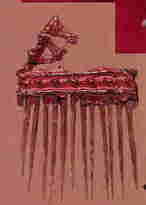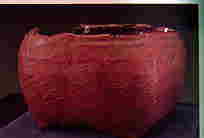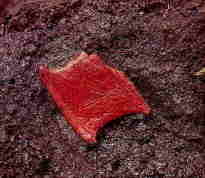 The Use of Lacquer - japan
The Use of Lacquer - japan
The process of lacquer painting is complex, and both learning and practicing take much labor and time. Jomon people could afford to take time and labor to improve a skill which was not immediately needed for their survival. Their life seems to have been more stable and affluent than was generally imagined.
of the comb above

A lacquered comb
- 14.3 x 9.5 cm
- Okegawa City, Saitama Prefecture
- The Final Stage (Banki)

- 8.5 cm high
- Hachinohe City, Aomori Prefecture
- The Final Stage

- Sannai Maruyama, Aomori Prefecture
- The Middle Stage (Chuuki)
Back to Top Page
Next Page